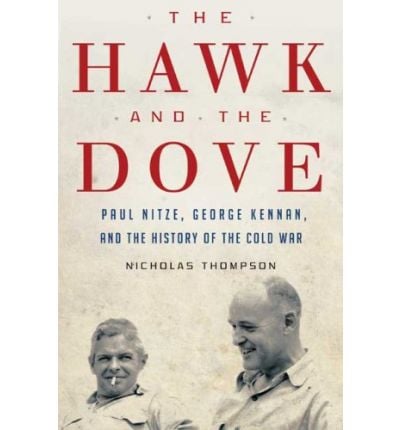Nicholas Thompson, the grandson of Paul Nitze, chose to write a biography of his grandfather, but with a restriction. Thompson thought it best to describe and compare his grandfather’s public career together with that of another public personage, George Kennan. I wonder why. Perhaps for the sake of an extensive biography. We ought not attribute motives to an author, but we can say something about the result. This is a book of parallel lives; but such a structure, or composition, seldom works.
Though Paul Nitze and George Kennan were very different men, their lives were chronologically similar. Both were men of the 20th century: Kennan was born in 1904; Nitze in 1908. Kennan survived Nitze by less than a year, but that does not matter. What matters is that their temperaments, their learning, their convictions, and their views of the United States and of the world were profoundly different. Kennan was a compulsive writer and a dedicated thinker; Nitze was a compulsive bureaucrat. Kennan was an intensely private person; Nitze was not. At least in one instance Nitze’s grandson understands this: “Kennan never fit in; Nitze always did.” They knew each other, they respected each other on occasion, but they never were close friends.
Thompson’s thesis is there in the title of his book: Throughout the Cold War, Nitze was a hawk; Kennan was a dove. That is too simple, and Thompson knows it; at least once he does qualify the meaning of these categories. There was a dove within the hawk (all right: but only very seldom); there was a hawk within the dove (more often, and usually at the right time). But there was nothing like an equivalence here, and no real parallel. Kennan’s character was profound. There was a deep consistency inherent in his anticommunism and his anti-anticommunism, because he was a man of principles and not of ideas. Nitze may not have been unprincipled, but he mistook and represented ideas as if they were principles, in particular the ideology of anticommunism. He was a bureaucrat rather than an opportunist; but he found it opportune enough to ally himself with many of the most unsavory spokesmen for a global American crusade, the neoconservatives: for example, Richard Perle. Nitze drafted and wrote many memoranda on American security during almost half of a century. Few of them are worth reading; none has any lasting value. With few exceptions, Kennan’s writings have survived their time; they are worth reading, and even pondering, today.
A full history of the Cold War will never be written. The topic is too large and complex. The development of the Cold War and its happenings were produced and promoted on so many different levels. One shortcoming of this book: Thompson is sometimes wrong about some of these events. Thus, The Hawk and the Dove does not quite qualify as an important contribution to the convoluted history of the Cold War. Yet the filial respect that moved Thompson to compose this book is commendable, and often also honest: On one important occasion, Thompson tells us that Nitze recorded the very opposite of what he had actually said.
[The Hawk and the Dove: Paul Nitze, George Kennan, and the History of the Cold War, by Nicholas Thompson (New York: Henry Holt and Co.) 416 pp., $27.50]

Leave a Reply